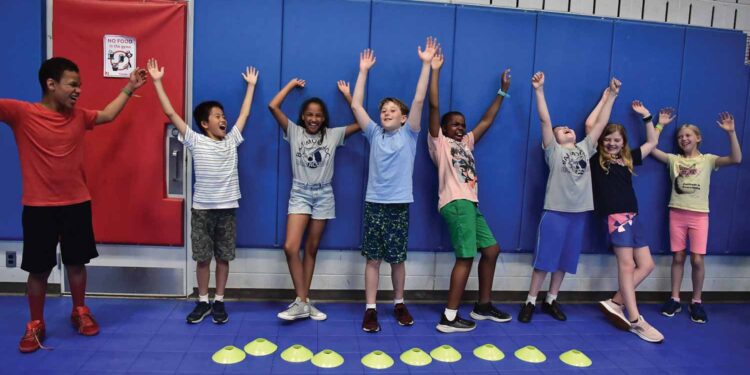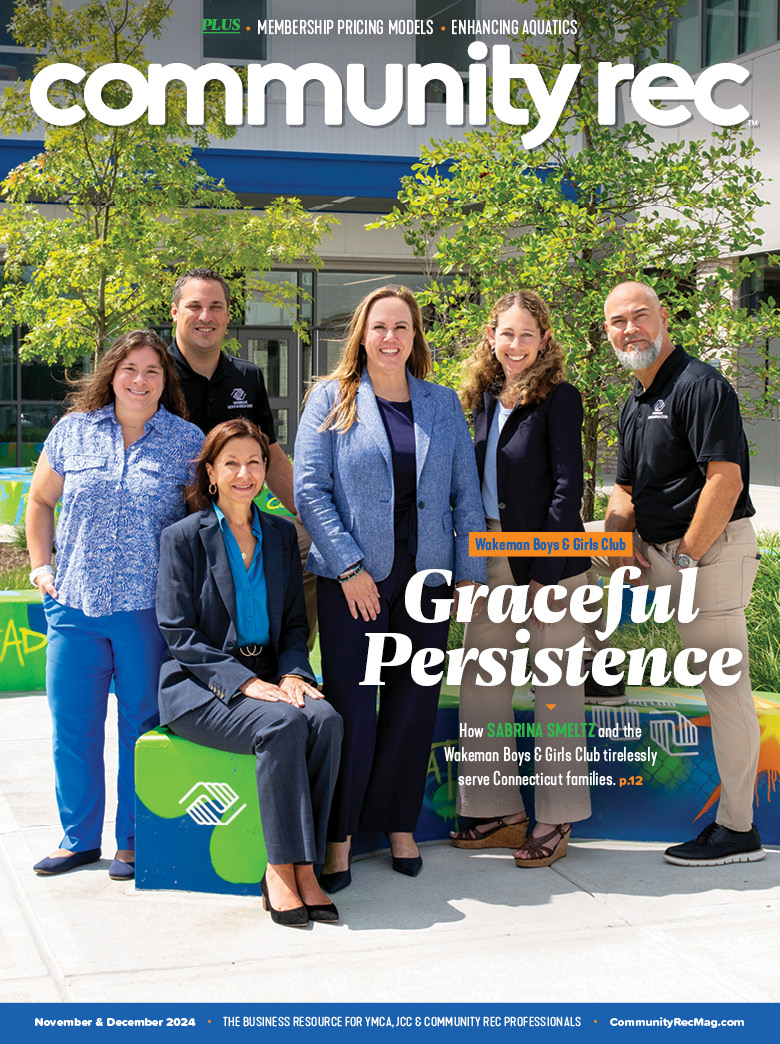Because youth fitness is a large part of many recreation center offerings, it’s important to put the right people in charge of leading these programs. The first place to start is the application.
Interviewing
For Amber Miller, the associate program director of sports and teens at the Benjamin Harrison YMCA of Greater Indianapolis in Indianapolis, Indiana, a major component of the resume she seeks out is relevant work history. “I look to see if they have worked with youth and what their customer service background looks like,” she said.
Similarly, Stacey Aufiero, the youth and family program director at the Merrimack Valley YMCA in Andover, Massachusetts, also looks for experience working with kids or specific interests such as sports, arts, dance or gymnastics. During the interview, she emphasized the in-person meeting should be a chance for the applicant to highlight their strengths and see where they would best fit.
“It is important for them to share, in depth, their work and comfort with kids of various ages,” said Aufiero. “Also, give a realistic scenario that could happen, and have them explain what they would do.”
While skills and experience are necessary, Miller also said it’s about personality, which is why she aims to find out what their passion is, learn about their coaching style and ask their “why.”
The First 90 Days
Once hired, the first 90 days of any employee affects the rest of their time with your organization, which is why it’s important to have a thorough onboarding process. Justin Dominick, the senior director of fitness at the JCC of Greater Baltimore in Baltimore, Maryland, shared his first 90 days list:
- Acclimate them to organizational procedures.
- Go over program objectives and goals.
- Show them where their programs are held and make sure they have access to necessary equipment and resources.
- Have them program their sessions ahead of time so they can be reviewed and provided feedback.
- Observe their programs in person so they can be provided further feedback.
- Get their feedback and make any necessary changes to ensure they are providing the best program possible.
For Aufiero, the first 90 days are filled with learning and developing skills to be prepared to work independently with members, and provide a safe and enriching experience. “Once hired, they will complete our required online trainings through The Redwoods Institute, which has several trainings on risk management and working with youth,” she described. “They will also attend a new hire orientation where they learn about the YMCA and our organization. Next, they will shadow another instructor and co-teach until they are ready and comfortable to lead a class alone.”
Constructive Coaching
As with any employee, there may be times an instructor will need to be coached. Dominick said the best and first approach is to coach in real time. “By observing their programs in-person on a regular basis, I can make sure they are delivering the program the way it’s intended,” he said. “It always goes back to the objectives and goals of the program — is the content and programming during each session moving us closer to our objectives and goals?”
Because everyone teaches differently, Miller takes an understanding approach and seeks to find what is comfortable for staff by asking their ideas on how they would like to teach the program. “I also remind them of the things we are trying to focus on during the sport, and if I need to, I will assist them in the program to help them understand better,” she said.
Hand-in-hand with understanding is communication — the key to Aufiero’s coaching style. “If there is something on their end going on, we can discuss and problem solve together,” she explained. “If I observe something, I schedule a time with them to discuss what I noticed and review the expectations.”
Continued Support
After the first 90 days, you want to make sure staff have the available resources they need to best serve members. One of the ways Miller provides continued support for her youth sports staff is to check in after each season and talk about any changes that need to be made to improve the next season, along with a weekly check to make sure they have all the tools to teach the sport.
Overall, the most important tool you can provide staff is an open line of communication. “I constantly get feedback from my instructors so we know what is and isn’t working,” said Dominick.
Additionally, physically being present can make staff feel supported and provide confidence. “I make myself present throughout their classes and am willing to jump in if they need,” said Aufiero. “If they need certain supplies, I do my best to get what they need to run a fun and successful program for our members.”
Brittany is the editor of Community Rec Magazine. Reach her at brittany@peakemedia.com.











